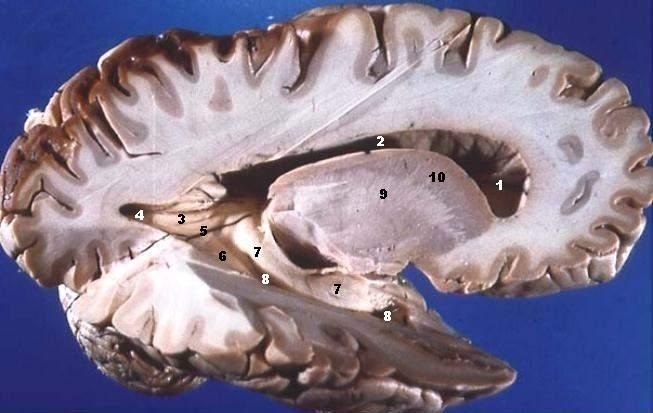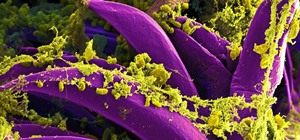In the past, infection with human immunodeficiency virus (HIV) commonly led to dementia as the virus made its way to the brain. Even in effectively treated people, HIV can hide out and replicate in places like the brain, where it's tough to detect. That's why it's very concerning that half of all HIV-infected patients still report cognitive problems.
The only way to confirm if the cognitive problems are due to an HIV infection present in the brain is through analysis of the patient's spinal fluid—obtained by inserting a needle into the lumbar region of the spine and drawing out the spinal fluid—an invasive and often painful procedure.
A new study by scientists at University College London, published online in the journal Clinical Infectious Diseases, demonstrates a less invasive, but clinically useful method to detect potential HIV activity in the brain of HIV patients.
The researchers looked at 146 HIV patients who had lumbar punctures to test for the presence of HIV in their spinal fluid because of problems that included headaches, confusion, sensory and motor problems, cognitive impairment, memory impairment, and attention difficulties. There was evidence of HIV present in the spinal fluid of 15% of the patients.
MRI imaging done on their brains showed the presence of diffuse white matter signal abnormalities—changes linked to cognitive problems that can be triggered by inflammation in the brain caused by HIV infection. And those patients whose brains showed change in the white matter were ten times more likely to have HIV in their spinal fluid, which reflects presence in the brain, than those with whose white matter appeared normal.
[Lumbar puncture] is quite an invasive procedure that requires patients to stay in hospital for several hours. Our new study shows that MRI scans could help to identify high-risk individuals for further follow-up tests.
Changes in white matter occurred even in people with normal numbers of CD4 white cells—cells that are decreased in active HIV infections. Normal numbers of CD4 cells are one indication of effective HIV treatment.

Most HIV antiviral medications are able to cross from the blood into the brain, and cases of HIV dementia have decreased, but milder cognitive disorders have increased for reasons scientists don't understand yet. In the meantime, there is a need to follow up on complaints of neurological problems in patients with HIV and try to keep those mild disorders from becoming full-blown dementia.
A study published in 2014, from the Temple University School of Medicine in Pennsylvania, found that, even when HIV can't be detected in a person's blood, significant brain inflammation is present in patients with dementia or less severe brain involvement. The authors of that study concluded that minor brain changes and dementia, both due to HIV, are part of the same disease process.
The changes in the white matter, documented by the scientists from University College London, may hold the key.
White Matter Matters
White matter makes up about half the volume of the brain and lies beneath the gray matter. Most of the white matter is made up of nerve fibers with a type of "insulation" on them, called myelin, that helps conduct the brain's electric impulses.
Recent studies, however, have shown that myelin has a role in cognitive function, too—a role once assigned only to gray matter. White matter is now known to participate in information processing and learning—and it's the white matter that is affected in HIV infected people.
In HIV-related dementia, white cells called macrophages release toxins and other chemicals that ultimately results in death of cells and atrophy (shrinkage) of the brain. It's vitally important to diagnose this condition and treat it, if possible.
Researchers continue to work to find out how HIV can escape detection in the brain, why—despite effective treatment to decrease the virus in the blood—it can still cause neurological problems and lead to brain atrophy, and what can be done about it.
Other studies have suggest that early initiation of antiviral treatment might be the most important factor, but that these treatments may not be reaching the exact spot where the HIV is hiding out.
MRI-detected changes in the brain's white matter may not be a replacement for spinal fluid analysis, but changes in the white matter can give important supporting evidence to changes in white matter—and may guide doctors to focus on ways to treat the process before it leads to dementia.
Just updated your iPhone? You'll find new emoji, enhanced security, podcast transcripts, Apple Cash virtual numbers, and other useful features. There are even new additions hidden within Safari. Find out what's new and changed on your iPhone with the iOS 17.4 update.






























Be the First to Comment
Share Your Thoughts